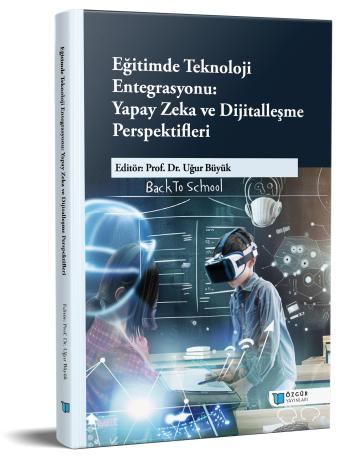
Digital Transformation in Classroom Environments through Generative Artificial Intelligence Applications in Education
Chapter from the book:
Büyük,
U.
(ed.)
2025.
Technology Integration in Education: Artificial Intelligence and Digitalization Perspectives.
Synopsis
This book chapter will discuss the integration and impacts of Generative Artificial Intelligence (GAI) technologies which have become inevitable in educational settings and form one of the foundations of digital transformation processes in modern classroom environments. Generative AI encompasses all AI systems capable of automatically structuring multimedia elements and content such as text, images, audio, and video. Unlike traditional AI, GAI does not merely analyze data; it learns patterns within creative processes and generates new data accordingly. Currently, these technologies are mostly seen in language models, image generation, music, and video production. From the perspective of educational stakeholders, GAI enriches students' learning experiences by developing instructional materials, facilitating self-assessment, and providing feedback aligned with higher-order skills. Additionally, it offers numerous benefits such as creating course materials tailored to students' levels, pace, and interests; enabling rapid identification and correction of mistakes through detailed feedback; and supporting creativity and productivity through creative content generation tools. In summary, generative AI makes students’ learning processes more effective, personalized, and creative, thereby increasing their success. From teachers’ perspective, generative AI assists in developing new materials and activities within classroom settings, thereby enhancing their creativity. Furthermore, AI tools that analyze student performance allow teachers to quickly identify weaknesses and provide targeted interventions. In terms of professional development, generative AI facilitates teachers’ awareness of educational technologies and pedagogical innovations. As a result, generative AI, when integrated into classroom environments, personalizes and enhances teaching processes. It offers content adapted to students’ needs, reduces teachers’ workload, and enriches the learning experience. Thus, digital transformation increases both efficiency and pedagogical innovation in classrooms.

